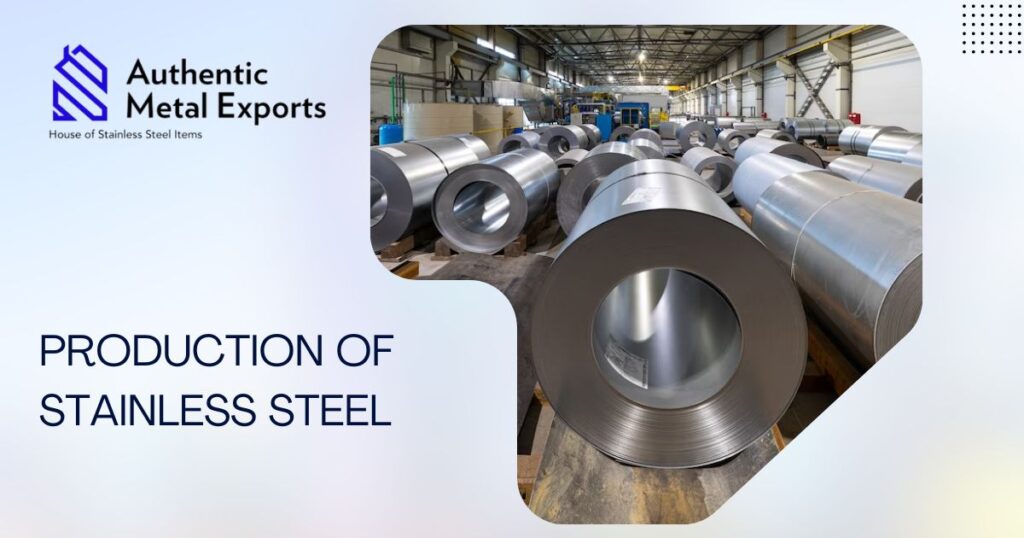The science behind the creation of stainless steel is a fascinating and complex process that involves a combination of chemistry, metallurgy, and engineering.
In this article, we’ll take a closer look at the production of stainless steel and explore the various techniques and technologies used in its manufacturing.
So, whether you’re a science enthusiast or simply curious about the materials that make up our world, read on to discover the secrets behind the fascinating science of stainless steel production.
Stainless steel was first discovered in the early 20th century by a British metallurgist named Harry Brearley.
In 1912, while working on a project to develop a new gun barrel, he noticed that some of the steel he was working with was resistant to corrosion.
After conducting further experiments, he discovered that adding chromium to the steel produced a material that was even more resistant to corrosion.
Brearley continued to experiment with different alloys and eventually developed the first true stainless steel in 1913.
Stainless steel is one of the metals that is used the most in the world today.
Stainless steel is an alloy of iron, carbon, and other elements, such as chromium, nickel, and molybdenum, which give it its unique properties.
One of the most notable properties of stainless steel is its corrosion resistance. This resistance is due to the presence of chromium in the alloy, which forms a thin, invisible layer of chromium oxide on the surface of the metal.
Other properties of stainless steel include its strength, durability, and heat resistance. It is perfect for use in a variety of applications thanks to these qualities.
The production of stainless steel requires several raw materials, including iron ore, chromium, nickel, and molybdenum.
The primary raw material is iron ore, which is mined from the earth and processed into iron.
To make stainless steel, the iron is then combined with other alloys, such as chromium and nickel, to create the desired properties. .
Chromium is added to the mix to provide corrosion resistance, while nickel is added to improve strength and durability.
Molybdenum is sometimes added to increase the metal’s resistance to high temperatures.
The production of stainless steel is a complex process that involves several stages.
The first stage is melting the raw materials in a furnace.
The next stage is refining the molten metal to remove impurities and adjust the alloy composition.
After refining, the molten metal is poured into molds and allowed to cool.
The resulting ingots are then rolled into thin sheets or plates, which are then further processed into the desired shape. This can involve cutting, bending, welding, and polishing.
There are many different types of stainless steel alloys, each with its own unique properties and uses.
Other types of stainless steel alloys include duplex stainless steel, which combines the properties of austenitic and ferritic stainless steel, and precipitation-hardening stainless steel, which is known for its high strength and resistance to corrosion.
Stainless steel is used in a wide range of industries, from construction and architecture to medicine and food processing.
In the construction industry, it is used for building facades, roofing, and bridges.
In the medical industry, it is used for surgical instruments, implants, and medical equipment.
In the food processing industry, it is used for equipment and utensils, as it is easy to clean and does not react with food.
Stainless steel is also used in the automotive industry, aerospace industry, and electronics industry.
One of the biggest advantages of stainless steel over other metals is its corrosion resistance. Unlike other metals, stainless steel does not rust or corrode, making it ideal for use in harsh environments.
Stainless steel is also very strong and durable, making it ideal for use in applications where strength and durability are important.
Additionally, stainless steel is easy to clean and maintain, and it is recyclable, making it an environmentally friendly choice.
Sustainability is an important consideration in the production of stainless steel. The industry has made significant progress in recent years in reducing its environmental impact.
Some of the initiatives include using recycled materials, reducing energy consumption, and improving production processes to minimize waste.
Additionally, stainless steel is a highly recyclable material, with almost all stainless steel products being recyclable at the end of their useful life. This makes stainless steel a more sustainable choice than many other materials.
The future of stainless steel looks bright, with new applications and innovations on the horizon. One area of development is the use of stainless steel in the production of renewable energy, such as wind turbines and solar panels
Another area of focus is the development of new alloys and coatings that can further improve the properties of stainless steel. As technology continues to advance, the possibilities for stainless steel are endless.
Stainless steel is a fascinating material that has revolutionized many industries. Its unique properties, such as corrosion resistance and strength, make it an ideal choice for a wide range of applications.
The production of stainless steel is a complex process that involves multiple stages and requires a combination of chemistry, metallurgy, and engineering.
As the industry continues to develop and innovate, the future of stainless steel looks bright.
With its sustainability, versatility, and durability, stainless steel will continue to be an important material in our lives for years to come.






